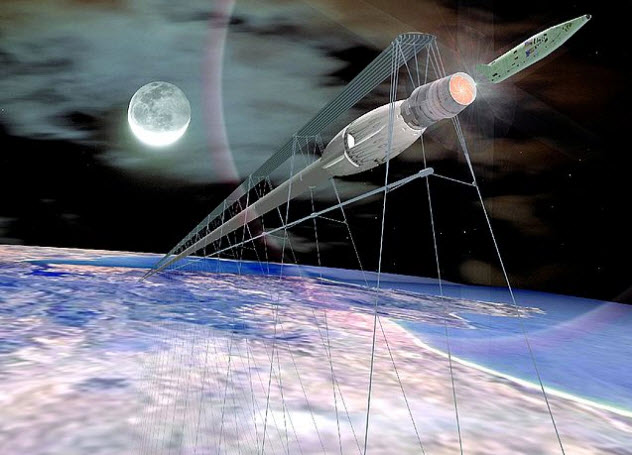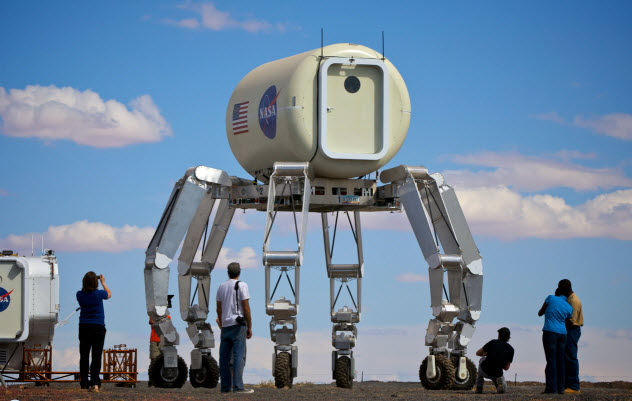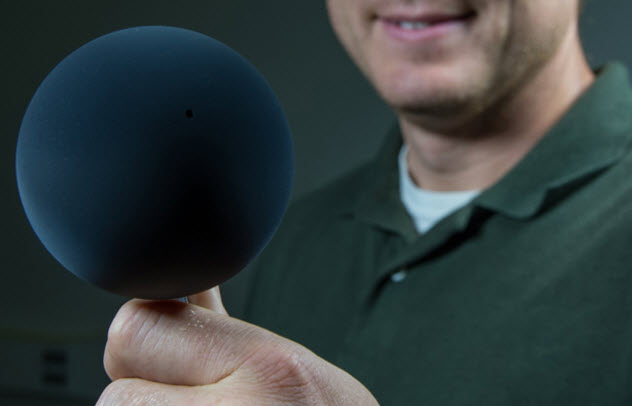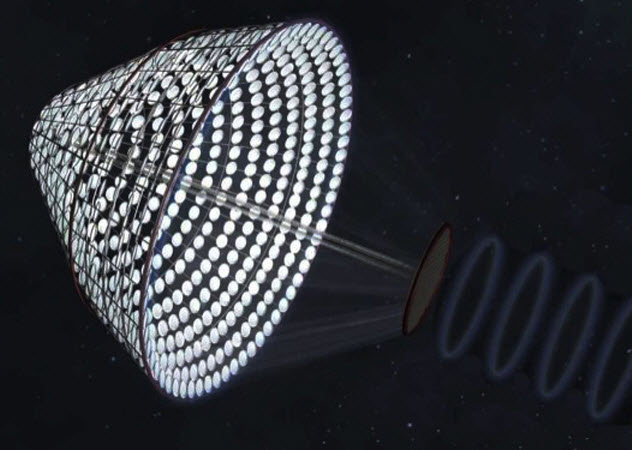 Technology
Technology  Technology
Technology  Our World
Our World 10 Ways Icelandic Culture Makes Other Countries Look Boring
 Misconceptions
Misconceptions 10 Common Misconceptions About the Victorian Era
 Mysteries
Mysteries 10 Strange Unexplained Mysteries of 2025
 Miscellaneous
Miscellaneous 10 of History’s Most Bell-Ringing Finishing Moves
 History
History 10 Great Escapes That Ended Right Back in Captivity
 Weird Stuff
Weird Stuff 10 Fascinating Things You Might Not Know About Spiders
 Food
Food 10 Everyday Foods You Didn’t Know Were Invented by the U.S. Military
 History
History 10 Odd Things Colonial Americans Kept at Home
 Weird Stuff
Weird Stuff 10 Superstitious Beliefs That Once Consumed Entire Cultures
 Technology
Technology 10 Scientific Breakthroughs of 2025 That’ll Change Everything
 Our World
Our World 10 Ways Icelandic Culture Makes Other Countries Look Boring
 Misconceptions
Misconceptions 10 Common Misconceptions About the Victorian Era
Who's Behind Listverse?

Jamie Frater
Head Editor
Jamie founded Listverse due to an insatiable desire to share fascinating, obscure, and bizarre facts. He has been a guest speaker on numerous national radio and television stations and is a five time published author.
More About Us Mysteries
Mysteries 10 Strange Unexplained Mysteries of 2025
 Miscellaneous
Miscellaneous 10 of History’s Most Bell-Ringing Finishing Moves
 History
History 10 Great Escapes That Ended Right Back in Captivity
 Weird Stuff
Weird Stuff 10 Fascinating Things You Might Not Know About Spiders
 Food
Food 10 Everyday Foods You Didn’t Know Were Invented by the U.S. Military
 History
History 10 Odd Things Colonial Americans Kept at Home
 Weird Stuff
Weird Stuff 10 Superstitious Beliefs That Once Consumed Entire Cultures
10 Awesome And Wacky Space Technologies Of The Future
The future promises crazy adventures throughout the cosmos, and it should be considered our good luck that we’re alive at the right time to witness the birth of a spacefaring race. In true sci-fi fashion, the upcoming space technologies responsible for our ascension to the stars range from wacky to downright suicidal.
10 Startram The Magnetic Space Train

For the measly cost of $20 billion, the proposed launch system Startram is expected to send 300,000-ton payloads into orbit at an ultracompetitive rate of about $40 per kilogram ($20/lb). That’s 99 percent less than the current cost of $11,000 per kilogram ($5,000/lb) of using solar power satellites.
To do this, Startram will not use rockets, propellants, or ionic drives. Instead, it will use electromagnetic repulsion. The concept is an old one in science fiction and an awesome one in practice, with real-life levitating trains currently ferrying passengers at nearly 600 kilometers per hour (370 mph).
However, these current maglev vehicles, such as Japan’s great bullet trains, are limited by drag as they scream through the air at high speeds. To achieve truly pants-wetting speeds, one must bypass all the pesky nitrogen, oxygen, and other mixed gases that slow us down.
Startram will do this by launching from the near vacuum of a ridiculously long tube, elevated by potent magnets and held in place by tethers at a height of 20 kilometers (12 mi). There, the thinner air allows comfortable launches at much greater speeds.
If the first generation of Startram works, a second, human-worthy version will follow. However, its completion will require about 20 years of work and an estimated investment of $60 billion.
9 Comet Hitchhiker

For all its scientific accuracy—namely, that comets are bad—1998’s thriller Armageddon grossly underestimated the difficulty of landing on one. Even NASA would rather explore other options. It recently granted preliminary funding to develop the Comet Hitchhiker, a harpoon-wielding craft that reels itself between asteroids like a fisherman pulling in a prize marlin.
Comets and asteroids are tricky targets because they have small masses and low gravitational influence. It’s also foolish to spend big money to explore such tiny landmasses, especially when the most interesting ones reside in the Kuiper Belt or the Oort Cloud (which are located beyond the orbit of Neptune and at the “edge” of our solar system, respectively).
The thrifty Comet Hitchhiker bypasses these problems in style, using its retractable harpoon and tether to launch itself between 5–10 rocky bodies during a single cosmic road trip. The Comet Hitchhiker is also incredibly efficient: When it latches onto its quarry, it harvests the space rock’s kinetic gravity, saving it for successive leaps to other bodies. Then, as the harpoon is retrieved, the vehicle is accelerated in the opposite direction, eliminating the need for propellants.
8 Solar Probe Plus
Like Earth, the Sun is fairly windy with its own gusts and gales. But while an earthly breeze might mess up your hair, a solar zephyr will turn you into a charred tumor. Although this energetic phenomenon remains mysterious, NASA’s Solar Probe Plus should answer many long-held questions in 2018 by zipping closer to the Sun than any previous craft has.
The robotic vehicle will pass as close as 8.5 solar radii from the Sun’s surface. There, the probe must brave radioactive energies not yet experienced by any man-made object as it smashes through the Sun’s atmosphere at 200 kilometers per hour (125 mph). To survive temperatures of 1,400 degrees Celsius (2,500 °F), the Solar Probe Plus will be clad in a foamy, carbon-composite heat shield that is 12 centimeters (5 in) thick.
But NASA can’t send the probe directly toward the Sun. It must be inched, relatively speaking, into the correct orbit by performing seven Venus flybys. It will spend almost seven years circling our sister planet. The exact schedule can be found here.
Each loop will tighten the probe’s course around the Sun. Finally, it will cozy into an orbit that is 3.8 million miles from the Sun, which is much closer than Mercury’s orbit. This is an amazing feat for a vehicle from Earth, considering that the current record is held by the Helios 2 craft at about about 27 million miles from the Sun.
7 Martian Outpost
With Mars and Europa looming, the prospects for future spacefaring are mouthwatering. Barring any global plagues or world-destroying meteors, NASA hopes to man the Martian surface within the next two decades.
The space agency has drawn up the preliminaries for a next-gen scientific outpost a la The Martian. By the 2030s, we might be tossing reddish snowballs at one another tens of millions of miles from Earth. In the video above, NASA gives us a peek at what an extraterrestrial proto-colony may look like.
The planned exploratory area will have a radius of approximately 100 kilometers (60 mi) and include habitation modules, scientific buildings, a fleet of pressurized rovers, and mining equipment for the inaugural, four-man crew. Energy will be at least partially supplied by an array of small nuclear fission reactors to supplement the solar panels that will be rendered useless at times by opaque Martian sandstorms.
Over time, numerous crews will occupy this site, where they must grow their food, harvest Martian water, and even create the propellant for their return trip to Earth. Luckily, Mars looks out for its own. Most—if not all—necessary ingredients are readily available through mining either the soil or the atmospheric gases.
6 NASA’s ATHLETE

NASA’s All-Terrain Hex-Limbed Extraterrestrial Explorer (aka ATHLETE) is a game-changing, exploratory mecha-spider that will be used to colonize the Moon. True to its name, each spindly limb features six degrees of freedom, enabling it to contort itself over rough, cratered patches of moonscape. Each limb is tipped with a retractable wheel for quicker locomotion over smoother terrain.
ATHLETE is also a handyman that packs a well-stocked tool kit. Its dexterous extremities can grip the scoops, drills, and grippers needed to give the Moon a full physical.
Primarily, though, the machine is a beast of burden built for heavy lifting. In the image above, it’s shown carrying a habitation module. Taller than a basketball hoop with its minimum height of 4 meters (13 ft), ATHLETE is an accomplished Olympic lifter, capable of hoisting 400 kilograms (900 lb) of gear over its head—in Earth’s gravity!
Most importantly, ATHLETE’s nimble frame gives it the agility needed to transport supplies, unlike the immobile, cargo-laden landers of the past and present.
5 3-D-Printed Martian Homes
To expedite a Mars trip, NASA has delegated Martian architecture to others by sponsoring a design competition for economically viable, 3-D-printed Martian habitats.
Just like Native Americans once used every piece of a kill, MIT students have advocated building homes out of the terrain and air. They began by reviewing popular science fiction films, including Gravity and 2001: A Space Odyssey, for architectural inspiration.
Ultimately, they decided on a humanizing, doughnut-shaped domicile. It inflates like a bounce house and uses a novel printing method that alleviates stress lines, allowing it to withstand the much higher air pressure inside. Every piece is made from materials extracted from Martian “sand” or the gases within Mars’ atmosphere.
However, the grand prize was awarded to Team Space Exploration Architecture and Clouds Architecture Office for their psychedelic Mars Ice House. It resembles an eerily translucent shark fin and is bolstered with locally sourced ice, as ice is the cheapest possible radiation shield.
The habitat will be seeded by an initial lander that touches down on a well-iced piece of surface and sinters a sturdy foundation. Then a tiny fleet of robots will set out to collect slush and erect protective membranes around the enclosure.
The robots—equipped with nozzles like tiny fire trucks—will spray the inner walls with a mixture of water, gel, fibers, and silica. Once frozen, the two icy sets of walls will contain the living environment. At that point, seedbeds contained in the lander will begin stirring to life to produce a garden of oxygen-bearing greenery for future inhabitants.
4 NASA’s Beach Ball Coronagraph

In the effort to image the Sun’s corona—a solar lion’s mane of charged particles—one large obstacle remains: the Sun. Our star’s unabashed brilliance drowns out the wispy, much dimmer corona and must be dealt with creatively.
Enter the beach ball coronagraph, NASA’s super-black titanium occulter. This tennis ball–sized blotter will fly in front of a traditional spectrograph imager, creating a miniature eclipse to reveal the Sun’s extremities.
NASA’s current Sun-faring spacecraft, SOHO and STEREO, are equipped with flat-plate occulters, but the flat design allows an uncomfortable level of fuzziness. A spherical object like the beach ball coronagraph should significantly reduce this solar noise.
Courtesy of nature, the best solar occulter has already been provided to us for free. Sadly, it’s located about 400,000 kilometers (250,000 mi) away. Moreover, our finicky lunar companion only chooses to cross the Sun every so often, leaving us with only an occasional glimpse of the fleeting corona.
But NASA’s titanium tennis balls should replicate the Moon’s effect, floating about 2 meters (7 ft) in front of their trailing imagers.
3 Honeybee Robotics’ Future Tech
Honeybee Robotics recently received NASA funding to pursue two novel technologies as part of a collaborative effort known as the Asteroid Redirect System. The overall aim is to know our asteroid enemies so that we may plan for cosmic threats in the future. But luckily, there’s enough room in the budget for a little destruction as well.
The first technology is a bona fide space shotgun. It will unleash a salvo of pellets at target asteroids to determine their solidity. Eventually, a boulder will be plucked from the asteroid’s surface with robotic claws and steered into orbit around our Moon.
Assuming we’re able to avert a self-inflicted doomsday, manned expeditions will then be able to explore an asteroid—and Earth’s new satellite—with unprecedented leisure. NASA expects that its first target will come from one of these three asteroids: Itokawa, Bennu, or 2008 EV5.
The second innovation is Honeybee’s handheld Nano Drill for retrieving asteroid samples. It weighs under 1 kilogram (2 lb) and is about as wide and long as a smartphone. The two-actuator drilling system removes small cores from the asteroid at different depths and can be deployed by robots or astronauts during an asteroid space walk.
2 SPS-ALPHA

The SPS-ALPHA is an orbiting solar energy generator, plated with tens of thousands of thin film mirrors that are individually positioned to leech precious energy from the Sun. The stored light is converted to a microwave beam and shot to Earth, with the potential to provide thousands of cheap megawatts.
Other than dutifully beaming energy to Earth, the SPS-ALPHA system also opens up new avenues for space exploration, an industry that’s often limited by the availability of cheap power sources. Many satellites currently run on the mechanical equivalent of a bowl of gruel. An orbiting solar generator could pole-vault humanity into space by supplying much-needed wattage to traveling spacecraft as well as outposts on the Moon or in Earth orbit.
However, several monumental challenges remain. For example, an SPS platform as described here would be larger than the International Space Station. It’s the equivalent of building our own Death Star in terms of man-hours clocked and joules expended by the small army of astronaut welders, technicians, and smiths necessary to build the thing.
Due to its elephantine dimensions, it must be constructed in orbit, necessitating at least a couple of space factories worthy of science fiction. Thankfully, the SPS system is primarily made of relatively small, easily mass-produced elements, reducing the challenge from impossible to extremely hard.
1 Objective Europa
Objective Europa is the craziest most ambitious exploratory mission ever proposed. It aims to send men to Europa, one of Jupiter’s moons, aboard a submarine to search for life in Europa’s subterranean ocean.
So how do the astronauts get back? Well, here’s the thing: They don’t.
Some poor souls must knowingly sacrifice themselves for the grandest scientific mission ever attempted by man. Even though we can reach Europa with existing technologies, such a venture is for the far future as we haven’t even peopled the nearer planets and moons.
Kristian von Bengston, Objective Europa’s spiritual leader, designer, and architect, basks in the challenge of the nearly impossible nature of the expedition. Bengston is currently crowdsourcing the project, both to gauge feasibility and to discuss other potential expeditions to outer bodies.
The submarine must have a set of implements worthy of Inspector Gadget, including a beefy drill, multidirectional thrusters, floodlights, and possibly a couple of robotic manipulator arms. The craft and submersible also require an exceptionally hardy radiation shield because Jupiter produces its own deadly radiation and traps more from the Sun.
Scouting an ideal landing site is of utmost importance because it’s believed that some regions of the frozen moon are better insulated from charged particles. Also, as the ice is many kilometers thick in most places, the lander must touch down near ravines or cracks where the crust is thinnest.








